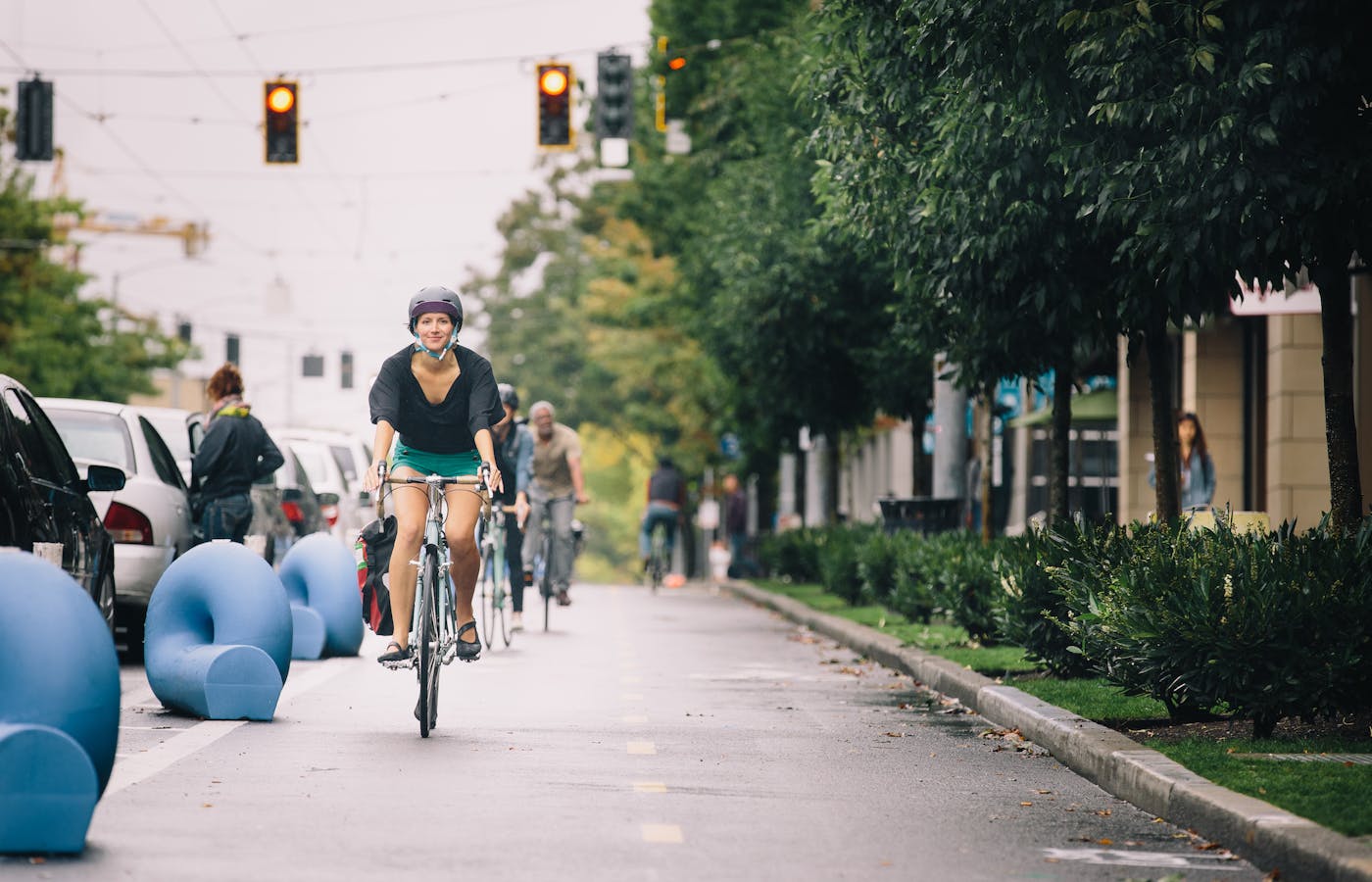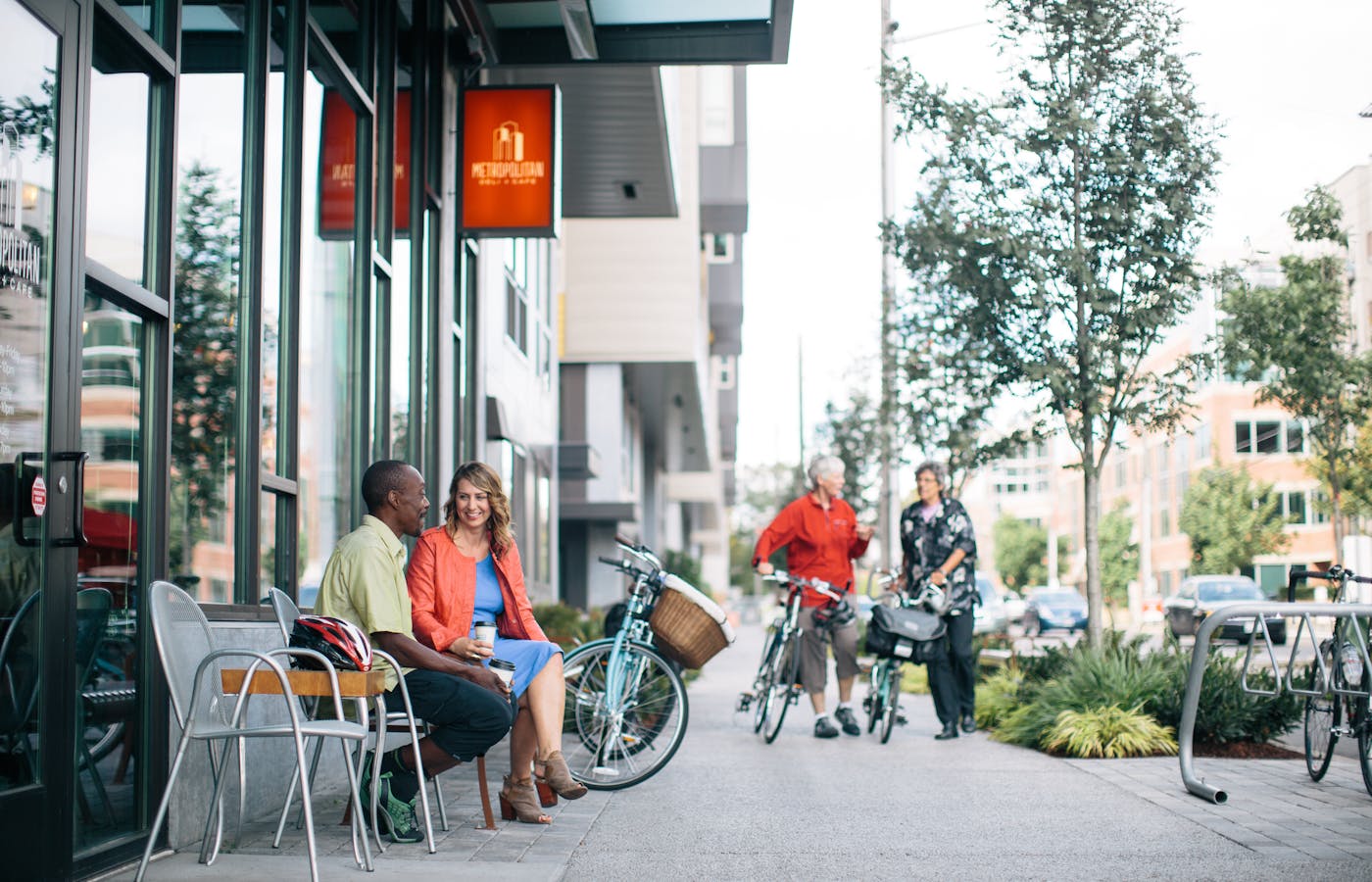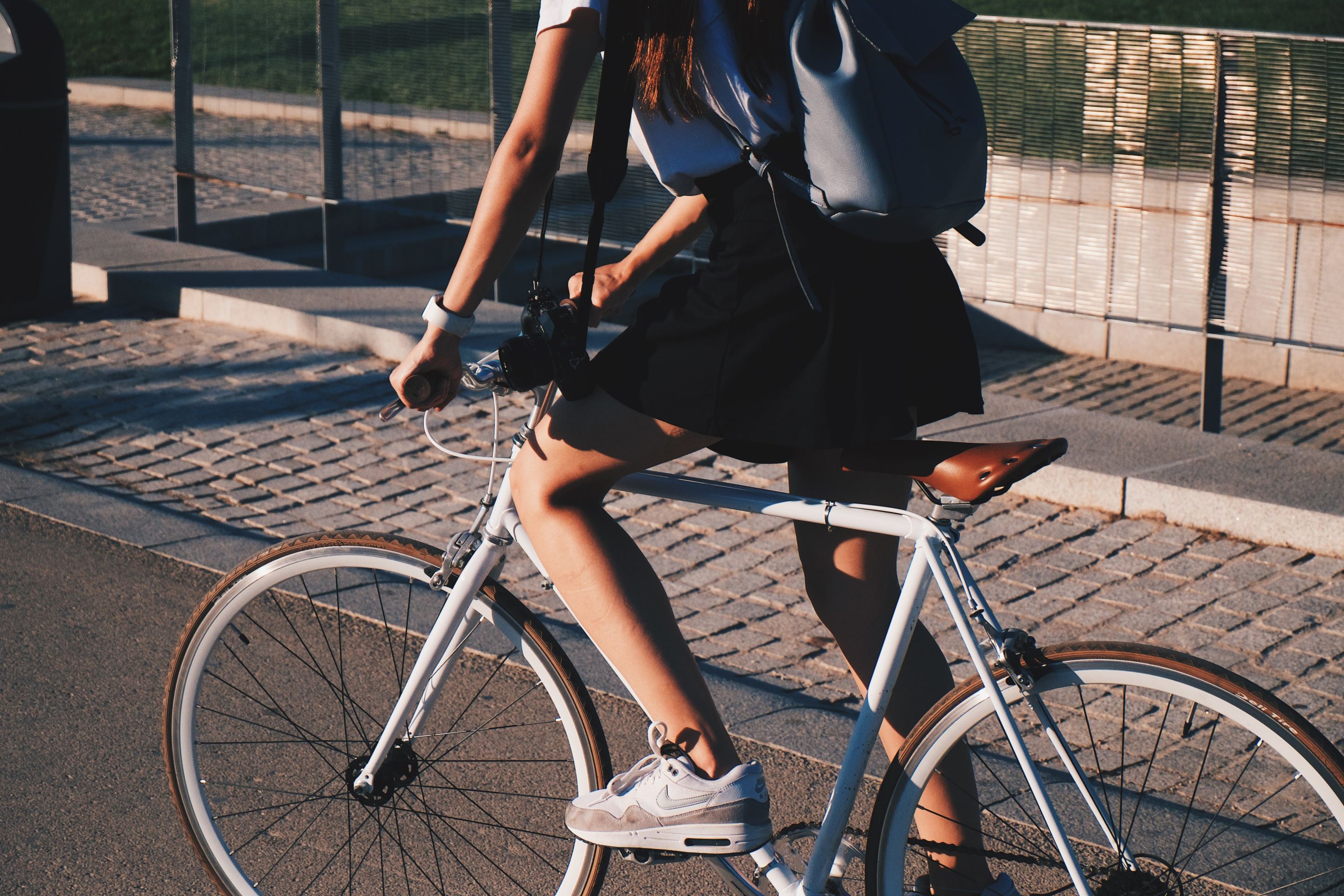A version of this article originally appeared on PeopleforBikes and is republished with permission. It is part one of a three-part series; read parts two and three here.
If you’ve ever attended a town hall meeting to support a proposed bike lane or trail, or simply engaged in a lively discussion about one on Nextdoor, you know it can often be a pretty frustrating process. These days, when discussing anything that involves growth or change, there’s almost always a small, vocal contingent that relies on emotion to argue why something shouldn’t happen. You might know a new bike lane — or another proposed project, like a housing bill that indirectly affects bicycling — would be a good thing for your community, but without data or research to back up your argument, speaking up can feel like a lost cause.
That’s where our new guide comes in. At PeopleForBikes, we spend our days firmly entrenched in the research and data that supports building better communities for bicycling. We developed a 15-point fact sheet to help counteract misconceptions that often arise when advocating for change, as well as to promote strategies we know work. Bookmark it, print it out, and email it to everyone you know — let these arguments support you in shifting the larger conversation around the power of bicycling.
1. Bicycling is good for the planet
This might feel like a given, but if Utah Senator Mitt Romney’s recent remarks are any indication, we’re not all on the same page about the climate benefits of getting more people on bikes. According to the Environmental Protection Agency (EPA), transportation makes up 28 percent of the total U.S. greenhouse gas emissions, with 57 percent of those emissions coming from passenger vehicles. When we build more (and better) bike lanes, the environmental benefits are clear: higher bike ridership, less driving, and an overall reduction in emissions.
Researchers at Carnegie Mellon found that “if even 10 percent of short car trips during peak afternoon travel were replaced with micromobility, more than 4,800 car trips would not happen, decreasing vehicle miles traveled by more than 7,300 miles a day.” While this would translate to a 2.76 percent reduction in greenhouse gas emissions, it would only be possible with “wide-scale bike lane deployment.” This study confirms similar findings from McGill University that spotlight bike infrastructure in Montreal, as well as research from the Institute for Transportation and Development Policy, which found new bike lanes lowered emissions in Guangzhou, China, and Bogotá, Colombia.
According to another European study, if 10 percent of the population were to replace one car trip a day with a bike ride, overall carbon emissions from transportation would also drop 10 percent. Research done by Portland State Universityshowed that if 15 percent of car trips were instead taken by electric bicycle, we could see a 12 percent decrease in transportation-related emissions. Add in the fact that bikes are one of the lowest carbon-emitting modes of transportation, and it's safe to say that any way you look at it, bicycling benefits the environment.
2. If you build it, people will bike
Ask most people why they don’t bike and they’ll likely name safety as a key concern. A nationwide survey from the National Institute for Transportation and Communities found that a whopping two-thirds of U.S. residents would be more likely to bike if they were separated from cars by a physical barrier. There is so much research that shows people will bike if cities build good infrastructure. Overall, the average protected bike lane sees bike counts increase 75 percent in its first year alone.
Notably, bicycling in Sevilla, Spain, increased 435 percent when the city added 86 miles of dedicated bike lanes. Even smaller transformations to include protected bike infrastructure can have a huge impact. After buffered bike lanes were installed on Philadelphia's Spruce and Pine streets, bike traffic increased 95 percent, while intersections in Montreal with protected bike lanes saw 61 percent more bike traffic than comparable intersections with no bike infrastructure. There’s also evidence that protected bike lanes are better for bike share.
In Cambridge, Massachusetts, a 2022 upgrade brought a two-way protected bike lane to a section of Garden Street, where before there had only been sharrows and door-zone bike lanes. The changes transformed the entire neighborhood: Bike mode-share nearly quadrupled and increased by more than two percent. Even accounting for seasonal dips in ridership, bicycling in the area increased more than sixfold since the separated bike lanes were built.

3. Yes, protected bike lanes are better than sharrows or standard bike lanes
As a rule of thumb, if something’s not going to be comfortable for people of all ages and abilities to ride, then don’t build it.
For decades, U.S. traffic engineers assumed that people on bikes could almost always share the road with cars. But a shoulder — even a striped bike lane — on a street with fast traffic isn’t an appealing place to bike for most people, especially women and less experienced riders. Putting a bike symbol in the middle of a busy thoroughfare does little to make it a place where parents feel comfortable riding with their children.
We now know, based on both U.S. and international experience, what kind of infrastructure designs give people of all ages and abilities the sense of safety, comfort, and enjoyment that makes them want to ride. This includes protected bike lanes, which are located next to the road and physically separated from traffic, as well as things like better lighting, traffic-calming barriers, and well-marked crosswalks. While sharrows might have a place in small towns or on low-stress streets, protected bike lanes should be the default for roadways with speeds above 25 mph or when vehicular volumes exceed 6,000 average daily traffic (ADT).
4. Bikes are good for public health
People living in bike-friendly communities tend to have better health outcomes due to increased physical activity, improved cardiovascular health, and reduced stress levels. A 2015 Columbia University study showed that New York City's $10 million investment in bike and pedestrian improvements resulted in an estimated societal health savings benefit of $230 million. Put another way, every $1,300 New York City invested in building bike lanes provided benefits equivalent to one additional year of life at full health over the lifetime of all city residents.
According to the British Medical Journal, regular bicycling is associated with a 41 percent decrease in the risk of death from any cause, a 45 percent decrease in the risk of cancer, and a 46 percent decrease in the risk of heart disease. And the benefits don’t stop there: a PLOS Medicine study showed that people who began bicycling regularly after age 50 saw a 20 percent decrease in the risk of Type II Diabetes.

5. Bikes lanes and trails are good for business
In response to proposed or newly built bike lanes, it seems like store owners often complain about reduced parking and customers lost. All of the evidence, however, points to the fact that installing protected bike routes tends to boost local shops. For example, after a hugely contested bike lane was installed on Skillman Avenue in Queens, New York, data shows that sales in the stores, bars, and restaurants on the seven-block commercial stretch collectively rose by 12 percent.
Other streets in New York have seen similar results: After the construction of a protected bike lane on Ninth Avenue in Manhattan, local businesses saw a 49 percent increase in retail sales (on other streets in the borough, the average was only three percent) and a redesign of the city’s Union Square to include a protected bike lane resulted in 49 percent fewer commercial vacancies, compared to five percent more throughout Manhattan. And it’s not just in New York: In Salt Lake City's Broadway, replacing parking with protected bike lanes increased retail sales.
There’s also evidence that customers who arrive at retail stores by bike spend the same amount per month compared to people who arrive by car — they tend to make smaller purchases but return more frequently. What’s more, neighborhoods that don’t require a car to move around are more economically resilient. Bike trails and greenways also benefit communities economically by attracting visitors, promoting job growth in tourism-related industries, and revitalizing communities through the "Trail Town" model and Trail-Oriented Development.
Check back tomorrow for the next entry in this series.






